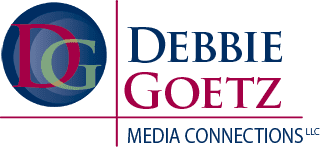What Are You Communicating?
My associate Ilena worked in healthcare and nonprofit organizations before working with me. In order to get the word out about the work these organizations were doing and subsequently get people to donate to them, she had to make sure that the language she was using was not only understandable, but it had to be factual and when it came social service organizations that served people with disabilities, it had to be respectful.
So, instead of saying “a person is confined to a wheelchair” in collateral or publicity material, she would say “a person uses a wheelchair”. What’s the difference? A wheelchair isn’t a prison. It is a means by which a person who doesn’t have the use of his or her legs attains mobility. When a person has mobility, he or she can be educated, employed, etc. Before wheelchairs were developed, a disabled person was confined to a bed and wasn’t able to get around at all without help from others.
It isn’t just with those with disabilities where we have to watch our words. As people across the country and around the world take part in protests in the wake of the deaths of George Floyd and Breonna Taylor, organizations large and small are looking at how they can fight racism and be more inclusive. Part of that initiative includes messaging, namely being sure that messaging reflects a commitment to diversity and social justice for all.
It starts with being aware of biases, how they affect messaging and we question those biases. Part of being aware of biases is to invest time in educating yourself about racism and discrimination. But, don’t let your efforts lead to hollow platitudes. Words need to be linked to measurable actions. Two companies that are taking measurable actions are the health insurance company AmeriHealth Caritas and beauty and personal care retailer Sephora. AmeriHealth Caritas created a Chief of Diversity position whose role is to see where the company is in terms of its diversity goals and what is needed to achieve them. Sephora will dedicate 15 percent of its shelf space to products from African-American owned businesses.
While striving for diversity and inclusion in your messaging, you want to avoid being paternalistic or patronizing. One example of how not to be is from the classic sitcom “All in the Family”. One character, Mike Stivic, is a white college student who is dedicated to racial equality. Yet, there were times when his ideals and rhetoric took a patronizing tone. In one episode, his friend Lionel, who is African-American, confronted Mike that he only talked to him about “race problems” and not about normal topics, like the weather. It was an eye opening moment for Mike Stivic.
The issue of racism didn’t happen overnight, so change won’t happen without sustained and committed effort. Communication isn’t just words, it involves actions as well. You want your words and actions to align so that no will wonder what you are really communicating.

